Our Aim
To provide you with an overview on New And existing technologies, hopefully helping you understand the changes in the technology. Together with the overviews we hope to bring topical issues to light from a series of independent reviewers saving you the time And hassle of fact finding over the web.
We will over time provide you with quality content which you can browse and subscribe to at your leisure.
TekSpek 's

AMD Radeon RX Vega
Date issued:
Radeon Rides Again
2017 is turning into a historic year for AMD. The chip giant has revitalised its CPU portfolio with competitive Ryzen processors, but that is just one part of the puzzle: stage two entails launching a GPU that can compete with NVIDIA's dominant GeForce.
It's a big ask as previous-generation Radeon GPUs have struggled to live up to expectations, but AMD is filled with renewed vigour and high hopes for a new architecture created and delivered by the Radeon Technologies Group. Codenamed Vega, this is arguably AMD's most important GPU architecture of all time, and will underpin the firm's Radeon portfolio for the years ahead.
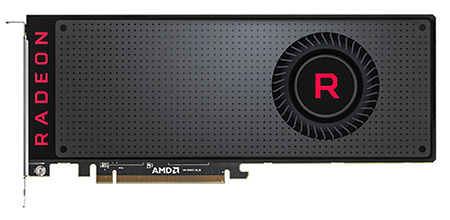
The first consumer GPUs to build on the Vega foundation are the Radeon RX Vega 64, priced at $499, and Radeon RX Vega 56, $399. The respective price points are telling in so far as they reveal that AMD's latest will be going head-to-head with Nvidia's GeForce GTX 1080 and GTX 1070, and though the ultra-high-end GTX 1080 Ti and Titan Xp will go unchallenged for the time being, AMD is taking an aggressive stance.
Launch-day retail prices for Vega 64 and Vega 56 are down roughly 25 per cent compared to Fury X and Fury, and there's extra incentive in the form of Radeon Packs. Available for a limited time, Radeon Packs bundle a Vega GPU with two free games, $100 off a Ryzen 7 CPU and motherboard combination, and $200 off a 34in Samsung C34F791 FreeSync monitor.

Aggressive pricing appears to suggest that AMD isn't in a position to score a resounding victory. So what does the Vega GPU bring to the table? In its fullest form, as championed by the Radeon RX Vega 64, AMD's best GPU touts four asynchronous compute engines, four next-gen geometry engines, 64 next-gen compute units, 4,096 stream processors, 256 texture units, 64 render back-ends, 4MB of L2 cache and a 2,048-bit bus to HBM2 memory.
The on-paper specification sounds remarkably familiar to 2015's Radeon R9 Fury X, but of course Vega's architectural enhancements play a significant role in improving overall efficiency. Rapid Packed Math allows the Vega NCU to handle two 16-bit ops simultaneously for greater throughput during certain workloads, 40 new instructions have been added to the ISA, and a new stage in the pipeline called the primitive shader allows the GPU to better organise its workflow.
AMD Radeon RX Vega: where does it slot in? |
||||||
|---|---|---|---|---|---|---|
| Radeon RX Vega 64 | Radeon RX Vega 56 | Radeon R9 Fury X | Radeon R9 Fury | Radeon RX 580 | Radeon RX 570 | |
| Launch date | August 2017 | August 2017 | June 2015 | July 2015 | April 2017 | April 2017 |
| Codename | Vega 10 | Vega 10 | Fiji XT | Fiji Pro | Polaris 20 XTX | Polaris 20 XT |
| Process (nm) | 14 | 14 | 28 | 28 | 14 | 14 |
| Transistors (mn) | 12,500 | 12,500 | 8,900 | 8,900 | 5,700 | 5,700 |
| Approx Die Size (mm²) | 486 | 486 | 596 | 596 | 232 | 232 |
| Full Implementation of Die | Yes | No | Yes | No | Yes | No |
| Processors | 4,096 | 3,584 | 4,096 | 3,584 | 2,304 | 2,048 |
| Texture Units | 256 | 224 | 256 | 224 | 144 | 128 |
| ROP Units | 64 | 64 | 64 | 64 | 32 | 32 |
| Peak GPU Clock (MHz) | 1,546 | 1,471 | 1,050 | 1,000 | 1,340 | 1,244 |
| Peak GFLOPS (SP) | 12,665 | 10,544 | 8,602 | 7,168 | 6,175 | 5,095 |
| Memory Clock (MHz) | 945 | 800 | 500 | 500 | 8,000 | 7,000 |
| Memory Bus (bits) | 2,048 | 2,048 | 4,096 | 4,096 | 256 | 256 |
| Max Bandwidth (GB/s) | 484 | 410 | 512 | 512 | 256 | 224 |
| Memory Size (GB) | 8 | 8 | 4 | 4 | 8 | 4 |
| Memory Type | HBM2 | HBM2 | HBM | HBM | GDDR5 | GDDR5 |
| Power Connectors | 8+8 | 8+8 | 8+8 | 8+8 | 6 | 6 |
| TDP (watts) | 295 | 210 | 275 | 275 | 185 | 150 |
| GFLOPS per watt | 42.9 | 50.2 | 31.28 | 26.06 | 33.37 | 33.97 |
| Launch MSRP | $499 | $399 | $649 | $549 | $199 | $179 |
Perhaps the most significant changes come in the form of a 14nm manufacturing process and the use of second-generation HBM2 memory. By employing 14nm technology, AMD is able to squeeze 12.5 billion transistors into a 486mm² die, and many of the extra transistors have been used to achieve higher operating frequencies. As the specification table reveals, Radeon RX Vega's peak clock speed is almost 50 per cent higher than the previous generation Radeon R9 Fury X.
At the back-end of the card, HBM2 promises double the bandwidth per pin of HBM1 and eight times the capacity per stack. In addition, Vega's render back-ends are now clients of a larger 4MB L2 cache, ensuring less need to move data around and more efficient output.
The AMD Vega performance
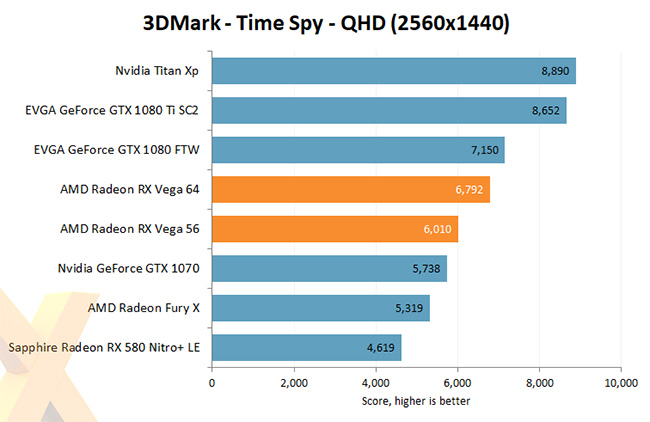
Putting Vega to the test, benchmarks from leading review sites suggest that Radeon RX Vega 56 has a slight performance advantage over GeForce GTX 1070, while Radeon RX Vega 64 proves to be a capable match for the GeForce GTX 1080.
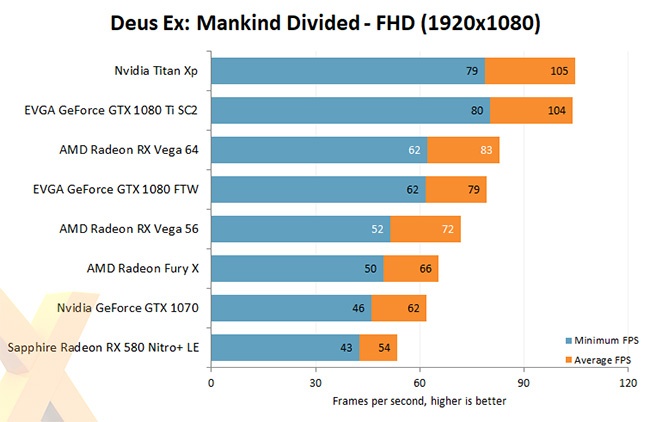
1080p gaming is light work for this class of GPU, and both Radeon RX Vega 56 and RX Vega 64 can be expected to churn out well in excess of 60 frames per second at this ubiquitous resolution, making either GPU a solid bet for a full-HD FreeSync display.
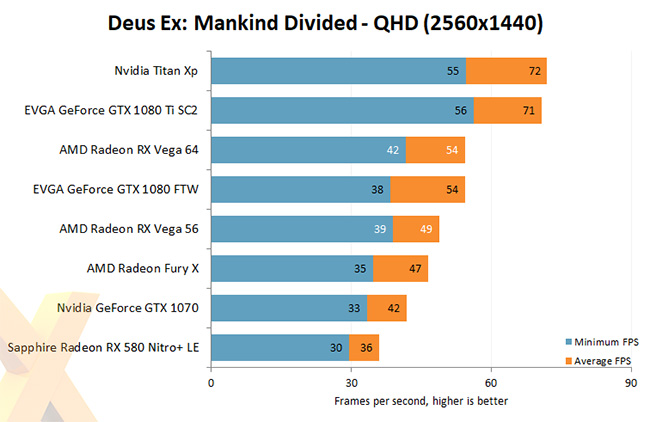
Cranking-up the resolution to 2,560x1,440 requires more horsepower, and it is in this scenario that the more powerful Radeon RX Vega 64 proves its worth as a genuine competitor to GeForce GTX 1080.
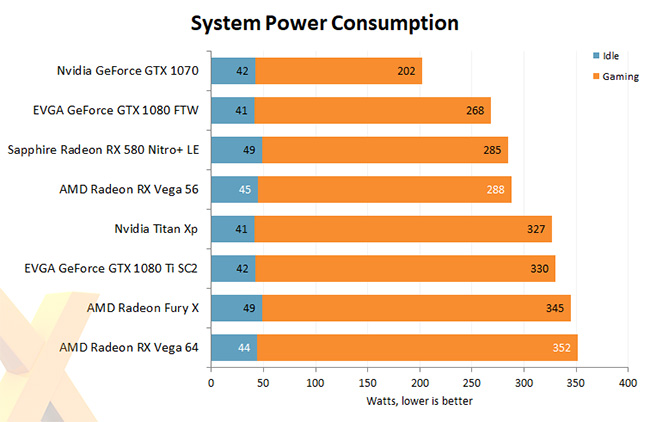
In-game performance is in line with expectations, yet Nvidia continues to hold the upper hand with regards to power consumption. Real-world testing reveals that the GeForce GTX 1070 and GTX 1080 are comfortably more efficient than the latest-generation Radeon RX Vega challengers.
Summary
AMD is making waves in the high-end graphics space by launching new GPUs designed to disrupt Nvidia's recent dominance. Powered by a new 14nm Vega architecture, the first two cards to emerge are the Radeon RX Vega 64 and RX Vega 56. Serving as genuine alternatives to the established GeForce GTX 1080 and GTX 1070, AMD's latest aren't able to raise the performance bar but do enough to serve as attractive solutions for any gamers in the market for a FreeSync display.
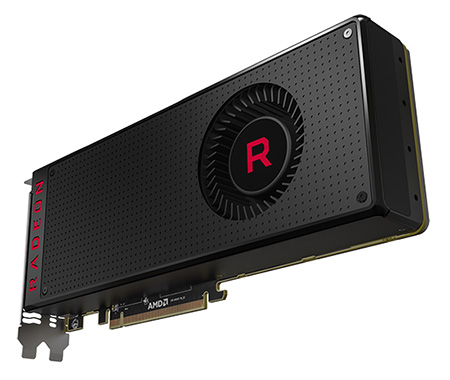
The AMD Radeon RX Vega 64 are, of course, available to purchase right here at Scan Computers.